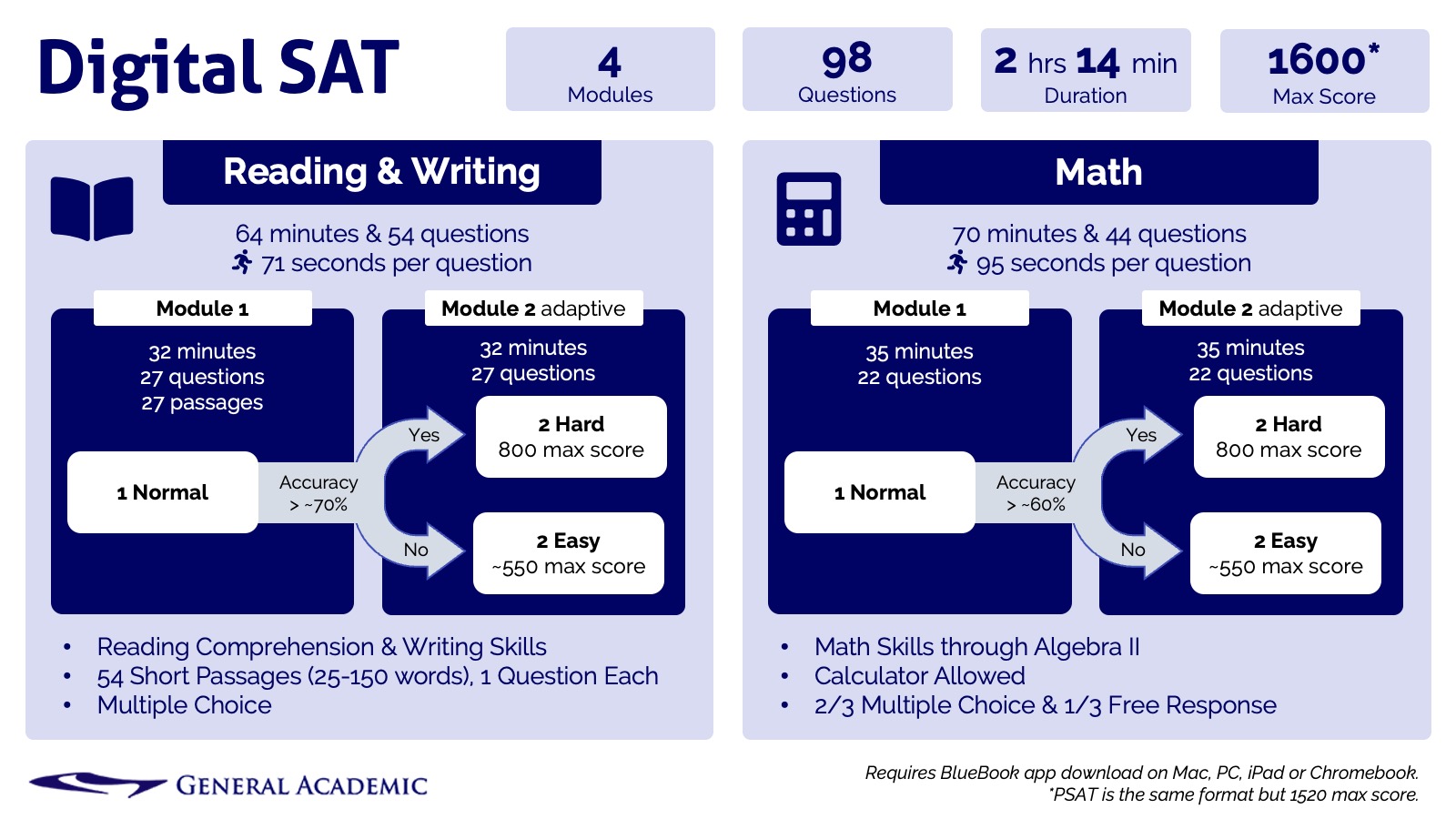
Houston’s top high schools by SAT test scores are Carnegie Vanguard, DeBakey, and Kinder HSPVA. Carnegie is also the Houston-area’s top public school by National Merit Semifinalists, students who scored in the top 1% on the PSAT.
Among Houston’s big suburban high schools, Memorial (Spring Branch), Tompkins (Katy), and Dulles (Fort Bend) take top honors⁴. Private schools aren’t required to release SAT data, but schools like St. John’s, Kinkaid and John Cooper are among the highest self-reporting for the class of 2023.
The most popular colleges among graduating high school Texans include Texas A&M, University of Texas Austin, and the University of Houston. Baylor University (6) is the most popular private college followed by Rice(12) and Texas Christian (16). The most popular majors include Health Professions, Business, and Engineering.
The average SAT score at number one Carnegie Vanguard was a 1316 out of 1600 for the graduating class of 2023. This score places Carnegie’s seniors among the top 8% of all seniors nationwide. Medical-career focused DeBakey isn’t far behind at 1260, placing its seniors among the top 13%. Kinder HSPVA’s score of a 1213 places its fine arts students among the top 18%.
All three of HISD’s top-schools are comprised solely of magnet-transfer students designated as gifted and talented, meaning the brightest 14% of students in the district. The top three “general enrollment” high schools are Bellaire (1083), Lamar (1023), and Westside (1008).
The average SAT score across HISD’s 45 high schools was a 933 out of 1600, which is a decline from last year’s 966. About 70% of all Texas seniors took the SAT in 2023, where the average score fell to a 978 down from 1001, and nationwide the average fell to a 1028 from 1050. These scores for HISD’s class of 2023 were captured before the state’s takeover of the district in June 2023.
Join our free Digital SAT and PSAT info session
Join us at our Rice Village Study Lounge for a no-charge information session about the new, digital PSAT and SAT including format, strategies, and FAQs. Register now.
Houston ISD SAT Scores - Class of 2023
| wdt_ID | School | # Tested | Composite | Reading | Math | % CCR |
|---|---|---|---|---|---|---|
| 1 | Austin HS | 265 | 827 | 420 | 407 | 4 |
| 2 | Bellaire HS | 704 | 1083 | 550 | 533 | 46 |
| 3 | Carnegie HS | 216 | 1316 | 664 | 653 | 93 |
| 4 | Challenge EC HS | 113 | 1039 | 544 | 496 | 32 |
| 5 | Chavez HS | 475 | 876 | 442 | 434 | 12 |
| 6 | DeBakey HS | 205 | 1260 | 631 | 630 | 87 |
| 7 | East EC HS | 103 | 1052 | 532 | 520 | 44 |
| 8 | Eastwood Acad HS | 104 | 1067 | 544 | 523 | 47 |
| 9 | Energy Inst HS | 177 | 1064 | 544 | 520 | 42 |
| 10 | E-STEM Southeast HS | 116 | 836 | 423 | 413 | 7 |
| School | # Tested | Composite | Reading | Math | % CCR |
Top Houston Suburban and Private High Schools SAT Scores
Note that this report is most accurate for Houston ISD¹, because its dataset for the class of 2023 is publicly available and complete. The scores for private schools are self-reported and generally represent the middle 50% of test-takers as opposed to the average score released by public schools. The list below is therefore for comparison purposes only and specifically not enumerated⁴.
- St. John’s School – 1470
- Kinkaid – 1377
- John Cooper – 1348
- St. Agnes – 1313
- Strake Jesuit – 1301
- Clements (2022) – 1275
- Seven Lakes (2022) – 1208
- Memorial (2023) – 1197
- Tompkins (2023) – 1177
- Dulles (2023) – 1136
Houston ISD SAT Scores Match or Exceed State & Nation
With an average SAT score of 933 versus the Texas state average of 978 and the national average of 1050, Houston ISD at first glance seems to be underperforming. However, these overall scores don’t take into account race and income, which are inextricably linked to ACT and SAT scores and vastly different among the populations between Houston, Texas, and the US as a whole.
HISD’s urban student body is significantly less well-off than the state and national average. Nearly 80% of the district’s students qualify for the federal free and reduced lunch program compared to 57% for all Texas students and 46% nationwide. Aligning Houston and Texas incomes, there’s virtually no disparity in scores².
Similarly, the median family income of HISD is $55,709. This family income is among the 2nd lowest in the US, and College Board reports that the average score for this group is a 942, which isn’t that different from HISD’s 933³.
Additionally, the non-causative correlation between race and test scores is equally strong. When re-weighting the Texas state average to match the same racial makeup as HISD, the Texas average SAT score falls to a 934 versus HISD’s 933. While HISD’s SAT scores for Asians and Whites outperform, it lags the state and nation for Blacks and Hispanics.
SAT Scores by Income*
SAT Scores by Race
*Median family income and racial breakdowns for class of 2023, all SAT test-takers in the United States. Source: College Board.
Most Houston ISD Seniors Not College or Career Ready
Only 23% of HISD seniors met the minimum benchmark score for college and career readiness. “Benchmark” score are the minimum score a student can earn and still be considered college and career ready by the non-profit developer of the SAT test, College Board. These benchmark scores are subdivided between Math and Evidence-Based Reading and Writing (English).
The district’s average English score of a 477 out of 800, barely places seniors below the 480 benchmark. However HISD’s average math score of 458 out of 800 is significantly below the 530 benchmark. Only at Carnegie, DeBakey, and HSPVA did more than 51% of graduating seniors meet College Boards’s benchmark scores.
HISD’s average score of a 933 places the district’s seniors in the 35th percentile, meaning that 65 percent of seniors nationwide are scoring higher. However, standardized test scores like the SAT and ACT remain inextricably linked to race and particularly family income. When HISD’s scores are weighted by demographics, it actually matches and sometimes exceeds state and national results.
Similar to the STAAR test for younger students, Texas pays for and essentially requires most public school juniors to take either the ACT or SAT. As such, the participation rate at HISD was 87% for the class of 2023, which would have taken the test in-class in the spring of 2022, before the state’s takeover of the district.
The low SAT benchmark scores may help to explain why only 47% of Americans hold an associates degree or higher when more than 62% of high school graduates go on to attend college.
Most Popular Colleges for Texas Graduates
Students taking the SAT have the option to send their scores directly to the colleges of their choice; 64% of Texas students participated in this service. The most popular colleges among Texas, college-bound seniors were Texas A&M, University of Texas at Austin, and the University of Houston. The most popular private universities were Rice University (12th overall), Texas Christian University, and University of Dallas. The most popular out of state colleges were the University of Arkansas, University of Oklahoma, and Oklahoma State University.
| wdt_ID | Institution | State | Type | # of Senders | % of Senders |
|---|---|---|---|---|---|
| 1 | Texas A&M University | TX | Public College | 52,042 | 29 |
| 2 | University of Texas at Austin | TX | Public College | 40,982 | 23 |
| 3 | University of Houston | TX | Public College | 29,123 | 16 |
| 4 | Texas Tech University | TX | Public College | 27,981 | 16 |
| 5 | Texas State University | TX | Public College | 20,205 | 11 |
| 6 | Baylor University | TX | Private College | 18,539 | 10 |
| 7 | University of Texas at San Antonio | TX | Public College | 18,428 | 10 |
| 8 | University of Texas at Dallas | TX | Public College | 14,863 | 8 |
| 9 | University of North Texas | TX | Public College | 13,657 | 8 |
| 10 | Sam Houston State University | TX | Public College | 12,849 | 7 |
| Institution | State | Type | # of Senders | % of Senders |
Most Popular Majors for Texas Seniors
Students taking the SAT are asked about their intended majors; about 85% of students responded. The most popular majors among Texas high school seniors are Health Professions (15% of respondents), Business (14%), and Engineering (9%). Students intending to major in Engineering earned the second highest average SAT scores with a 555 in Reading and 562 in math; the highest scores were earned by those intending to major in Mathematics and Statistics (588 in Reading and 613 in Math).
| wdt_ID | Intended College Major | Test Takers | Percent | Total | ERW | Math |
|---|---|---|---|---|---|---|
| 1 | Health Professions and Related Clinical Sciences | 27,488 | 15 | 1,007 | 513 | 494 |
| 2 | Business, Management, Marketing, and Related Support Services | 24,883 | 14 | 1,018 | 515 | 503 |
| 3 | Undecided | 26,132 | 14 | 936 | 475 | 460 |
| 4 | Engineering | 16,523 | 9 | 1,117 | 555 | 562 |
| 5 | Biological and Biomedical Sciences | 15,078 | 8 | 1,103 | 561 | 542 |
| 6 | Visual and Performing Arts, General | 10,246 | 6 | 1,018 | 526 | 492 |
| 7 | Computer and Information Sciences and Support Services | 9,742 | 5 | 1,138 | 569 | 569 |
| 8 | Psychology, General | 7,383 | 4 | 1,037 | 538 | 500 |
| 9 | Education | 5,673 | 3 | 982 | 504 | 478 |
| 10 | Agriculture, Agriculture Operations, and Related Sciences | 4,840 | 3 | 955 | 488 | 467 |
| Intended College Major | Test Takers | Percent | Total | ERW | Math |
How to Improve SAT and ACT Test Scores
College Admissions tests like the ACT and SAT should not be particularly mysterious. They simply test a student’s strengths in core academics like math and English. In fact, the best predictor of a student’s success on the SAT is simply how good their grades are in challenging Algebra and English courses.
Top 5 Strategies to Improve Your SAT Test Score:
- Work hard in your English and math courses, particularly Algebra I and Algebra II
- Take free practice tests (College Board offers at least 6), and get to know the test structure and format (see above)
- Learn from your mistakes; the majority of your prep should be re-learning what you’ve forgotten
- Learn some basic test-taking strategies like time management and how to read the questions
- Take the SAT or ACT at least twice; multiple test takers consistently see higher scores, and there are fee-waiers if you cannot afford the registration fee
Don’t get hung up on learning “tips and tricks.” There are no amount of tips and tricks that will overcome your inability to manipulate fractions or identify the main idea of a sentence. Also, don’t think that you simply “suck at math” or just need to “read more“. You can improve in all of these areas with a well-structured plan and dedicated resolve.
Also, don’t let your race or income keep you from trying and succeeding. Statistics are simply an after-the-fact look at numbers. They don’t look at you personally, and they don’t understand your human potential.
Ask your school for help. Every Texas school receives a government accountability rating from a scale of A-F. SAT and ACT scores are part of this rating. Your school administrators do not want to have low scores. As such, they do have the incentive and the money to help you do your best.

Enroll in an SAT Prep Course & Take Mock Test
For more than 20 years General Academic has been Houston’s leading provider of ACT, SAT, and college counseling support. Having written 12 full-length digital SAT practice tests, we are also one of the nation’s largest publishers of preparation material.
- Classes are capped at 8 students to ensure ample, personal attention
- Brilliant instructors represent the top 10% of the top 1%
- Advanced data analytics and unparalleled practice material
Save $100 on a test prep course with the code, “NTLDR” for “not too long; I did read it!”
More College Prep Advice from General Academic
- Best Summer Opportunities for High School Students
- Test-Optional College Admissions for Texas Students
- College Essay Tips – Common App, Supplemental Essays, and More
Additional Sources
- HISD Assessment, Accountability, and Compliance Class of 2023
- HISD Facts and Figures 2022-2023
- College Board Texas Annual Report Class of 2023
- Carnegie Vanguard School Profile PDF
- College Board 2023 SAT Suite Annual Report Total Group PDF
Notes
- The original dataset for Houston ISD’s Class of 2023 can be downloaded here.
- “Aligning” demographics means to calculate a weighted average based off the same demographics between Houston, Texas, and the US. These three groups do not have the same demographics, so to do these calculations is hypothetical.
- Given the strong linear relationship between income and scores, it’s possible to estimate that every 1% of a population that qualifies for free and reduced lunch is equivalent to a 2.25 point average reduction in score. Since HISD is about 80% free and reduced lunch, its estimated score would be a 930 (2.25*80=180 subtracted from 1110, score of richest quintile of students).
- Note that this report is most accurate for Houston ISD, because its dataset for the class of 2023 is publicly available and complete. We included Clements and Seven Lakes due to their outstanding performance on this year’s PSAT but could not verify SAT numbers for the class of 2023. The scores for private schools are self-reported and generally represent the middle 50% of test-takers as opposed to the average score released by public schools.
SAT and PSAT FAQs
Students should start their test prep by taking both a mock ACT and digital SAT. The student’s performance and comfort on that diagnostic exam will then guide their choice of which test to ultimately prepare for the most—but preparing for one test also prepares them for the other.
Whether your child should take the SAT or the ACT is purely a matter of preference. With about 1.3 million students taking either tests every year, both are equally accepted nationwide. The SAT is more popular in Houston just because of historical preference, and Houston ISD pays for every junior to take the SAT because College Board won the contract (conversely ACT won the contract in North Carolina for example). Click here to see which state governments sold out to College Board (SAT) and which ones got bought by ACT.
Both the Digital SAT (2024) and Enhanced ACT (2025) are relatively new and an hour shorter than the versions parents took. Furthermore:
- Digital SAT passages are only a few sentences versus more than 700 words for the ACT.
- The Enhanced ACT is offered both online and in paper
Taking a full-length mock test under timed conditions is one of the best ways to predict how your child will perform on the actual exam; it also helps them build the mental toughness necessary to perform reliably on test day.
There’s a big difference between working 10, untimed questions at the kitchen table with the aid of a tutor versus slogging through 161 unassisted questions in a room with other kids all at the same time.
We offer complimentary diagnostic mock testing for ISEE, ACT, and SAT to both current and future clients. For current clients, we also offer ongoing mock testing when our guidelines for properly spacing out practice tests is followed.
Ideally, students will complete at least 3 full-length practice tests before they take the ISEE, SAT, or ACT exam. However, parents should be careful not to force students to take mock tests in quick succession without sufficient studying.
We expect students to complete a minimum of 20 hours of tutoring and self-study between each mock test. Forgoing this recommendation risks demoralizing students and/or being disappointed by lack of perceived improvement.
Students working with us have access to more than 12 full-length practice tests.
General Academic recommends that rising high school juniors start preparing for the ACT and/or SAT in the summer (June/July) in the lead up to the fall test dates (August/ November). This timeline allows the student to work around particularly stressful periods like mid-term and final exams. It provides ample time to prepare not only for the first, fall test date but also a second or third testing in the spring of their junior year.
Ultimately, the goal is to have the student finished with their testing by the May test date as a sanity check and to leave the summer period open for their college applications and essays. However, the student will still have plenty of opportunities for more testing in June, August, October (latest for early decision), and November (recommended latest for regular decision), but this would be on top of their applications and regular schoolwork in the fall of their senior year.
The most valuable resource in test preparation is time. The most difficult math topics tested on the SAT and ACT are Algebra II and some trigonometry, which most students will have already learned by the start of their junior year. Therefore, in order to avoid regretting not having started early enough, the summer before junior year is the best time to start.
With that said, “test prep burnout” is a very real phenomena. Parents should avoid cramming too much test prep into an especially tight or stressful period of time, and they should accept if students are already scoring at their peak ability.
In response to the new Digital SAT test rolled out in 2024, competitor ACT also announced that they would overhaul their exam beginning as early as spring 2025. The updated ACT test is shorter (2 hours) and makes the dreaded Science Test optional. Scoring remains on a scale of 1-36, and the test will differentiate itself from the Digital SAT in that it will be offered on both paper and computer.
Most General Academic high school juniors will take the ACT or SAT two or three times to ensure they earn the score they need. There is no penalty for taking the test multiple times, and colleges only care about the highest score.
Note that most juniors will also take the PSAT in October for National Merit Scholarship qualification.
The SAT is generally offered to Houston-area students eight times a year:
- August
- October
- November
- December
- March
- April (all Houston ISD juniors in-class, automatically registered and paid)
- May
- June
Students need to register online at CollegeBoard.org at least four weeks in advance to avoid late-registration penalties and ensure availability. Most General Academic students will take the SAT in November, March, and May of their junior year.
The ACT is generally offered nationally seven times a year:
- September
- October
- December
- February
- April
- June
- July
Students need to reegister online at ACT.org at least five weeks in advance to avoid late-registration penalties and ensure availability. Most General Academic students will take the ACT in October, February, and April of their junior year.
The genuinely not-waffling answer is that every student is different. How long your child needs to spend preparing depends primarily on:
- What score do they want to achieve?
- What score do they have right now?
- How big is the gap between their goal and current scores?
However, the overly simplified answer is:
- For the SAT, students can expect about a 40-point improvement for every 7 hours of quality preparation
- For the ACT, students can expect about a 1-point improvement for every 7 hours of quality preparation
The operative word in this basic response is “quality.” Students cannot spend those 7-hours just watching videos on Khan Academy while simultaneously posting to Tik Tok. They need to be actively engaged in the material, taking practice tests, and truly learning from their mistakes.
The majority of the time spent on test prep is remediating basic math and English skills. No amount of tips, tricks, or talking-head watching will make up for not being able to actually identify the main idea of a paragraph or manipulate fractions.
The shorter answer is that students who have the means and time to prepare and take the ACT or SAT should absolutely do so.
Colleges like standardized tests because they’re norm-referenced and their scores are comparable across the entire US population regardless of school and curriculum. However, the uncomfortable outcome of testing is results. And historically standardized testing shows enormous performance gaps between students from different socioeconomic backgrounds.
It’s this measured gap between students of different backgrounds that largely propels the test-optional movement. Furthermore, the COVID-19 pandemic led to additional challenges like simply not being able to get students in a room to test. As a result, colleges raced to go test-optional, and some university systems like the state of California even went test-blind in 2022.
While colleges are reluctant to publish their admissions data, since-redacted statistics from the pandemic and off-the-cuff remarks from admissions officers, demonstrated that students who submitted scores were often twice as likely to gain admission. The basic premise is that only students with something to hide didn’t submit scores.
But why did that happen even when it was the colleges’ policy to be “test-optional” and technically not penalize students who didn’t submit scores? There’s at least two reasons—submitting strong scores is another, positive data point, and admissions officers are still human. Would a car buyer rather choose the model that got “sufficient gas mileage” or the one that gets “50 miles per gallon” or “400 miles of range”?
Furthermore even less well-off students can reap huge rewards from submitting high test scores. For example, a low-income high school student is more able to ace the ACT or SAT than attend a rich, academically competitive school, participate in a bevy of after-school activities, and spend hundreds of hours on unpaid, volunteer work.
Click here to read more about our analysis of test-optional admissions.





